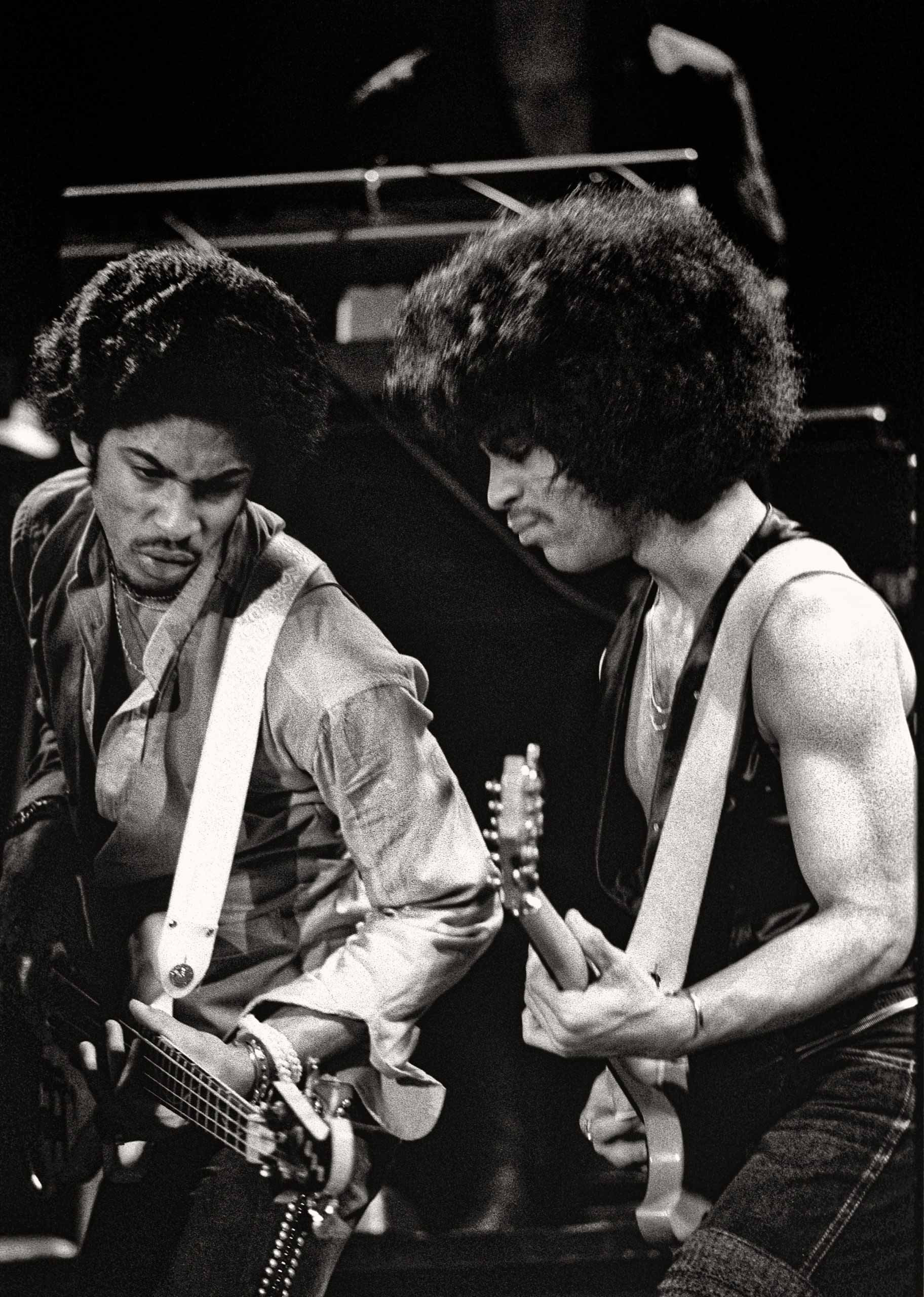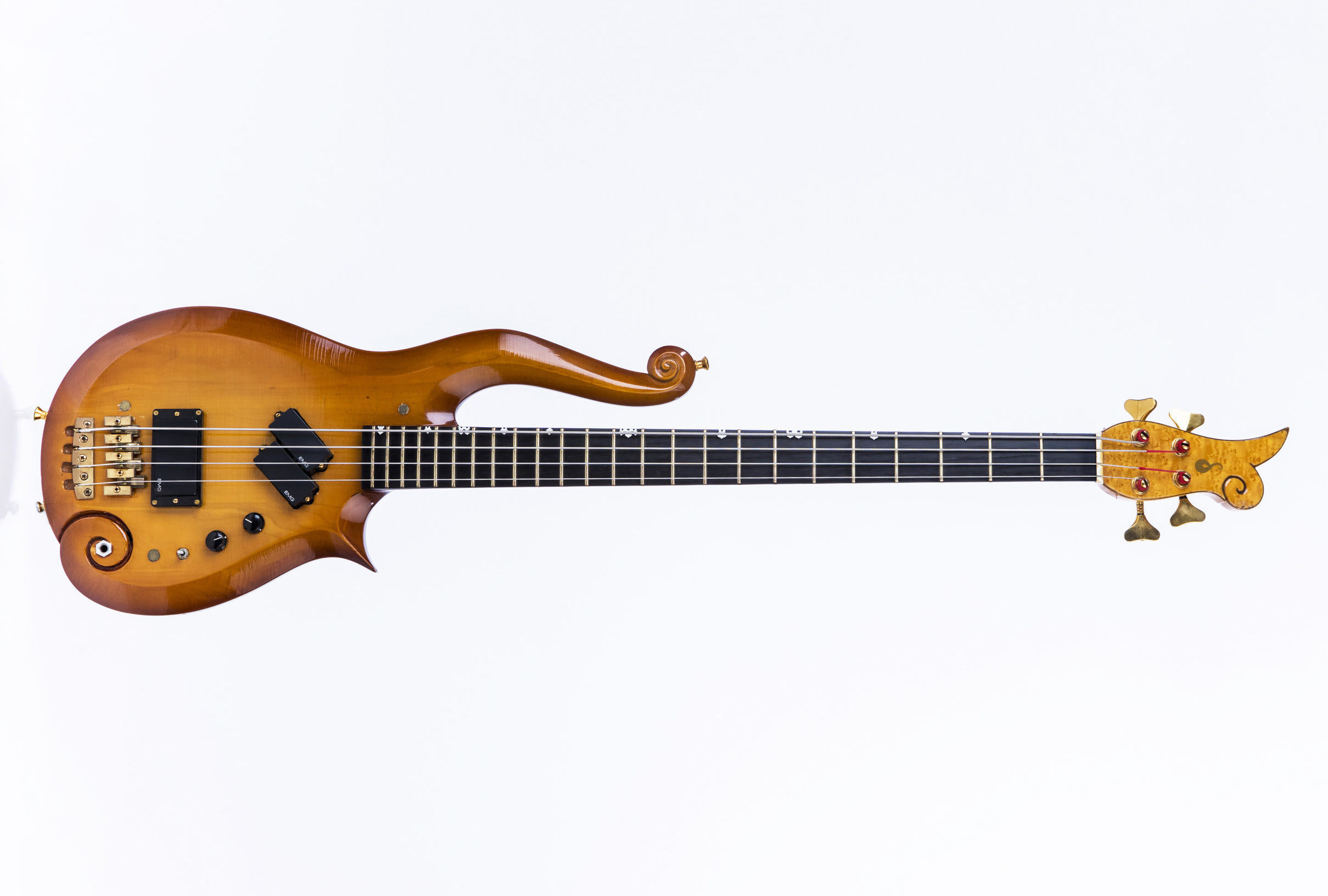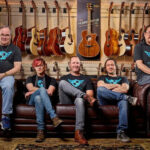Prince’s Cloud guitar. Just the name conjures up images of purple rain, electrifying performances, and a musical genius at his peak. More than just an instrument, the Cloud guitar became synonymous with Prince himself, an extension of his flamboyant persona and groundbreaking sound. Featured prominently in his seminal film Purple Rain, this uniquely shaped, gleaming white guitar captivated audiences worldwide and cemented its place in music history. But the true story behind this iconic instrument, arguably the Princes Guitar, is more intricate and fascinating than many realize. It’s a tale of mystery, friendship, and the search for the genesis of a legend.
For years, the origin story of Prince’s Cloud guitar remained shrouded in a degree of uncertainty, a captivating puzzle for devoted fans and guitar aficionados alike. While the luthier Dave Rusan, who crafted the guitar for Purple Rain, is well-documented, the inspiration behind its distinctive design was less clear. Was it a completely original concept? Or was it born from an earlier instrument, a muse that sparked the creation of this legendary princes guitar?
This article delves deep into the quest to uncover the true roots of the Cloud guitar, tracing its lineage back to an unexpected source: a bass guitar. This journey involves piecing together fragmented memories, navigating conflicting accounts, and embarking on a physical search for clues, ultimately revealing a story that is as much about Prince’s formative years and his bond with his childhood friend André Cymone, as it is about the instrument itself. Prepare to explore the captivating narrative behind the princes guitar, a story that stretches from Minneapolis basements to San Francisco guitar shops and beyond, finally illuminating the fascinating origins of this musical icon.
The quest began with a photograph, a seemingly innocuous image of a bass guitar that bore a striking resemblance to the famed Cloud guitar. This “Cloud bass,” as it became known, hinted at a deeper history, suggesting that Prince’s iconic instrument wasn’t born in a vacuum. Its elegant curves and handcrafted details echoed the aesthetic that would later define the Cloud guitar, sparking an irresistible urge to understand its significance. This wasn’t just about tracing the origins of a guitar; it was about understanding the evolution of Prince’s artistic vision and the influences that shaped his groundbreaking style, all starting with this intriguing princes guitar lineage.
 Prince Guitar Origins | Artful Living Magazine
Prince Guitar Origins | Artful Living Magazine
The original sketch provided to Dave Rusan for the Cloud guitar, inspired by the design of a unique bass guitar.
Dave Rusan, the luthier entrusted with bringing the Cloud guitar to life for Purple Rain, recounted the commission as a pivotal moment in his career. Working at Knut Koupeé Music in Uptown Minneapolis, Rusan, primarily a repair technician at the time, was given a unique and exciting directive. As he recalled, the shop owner approached him with the news: “Prince is going to make a movie. He needs a guitar that’s going to be part of the plot, and you’re going to make it.” This seemingly simple instruction launched Rusan into a creative endeavor that would forever link his name to the legacy of the princes guitar.
Rusan’s task was to translate Prince’s vision into a tangible instrument. The starting point was a sketch, inspired by a bass guitar Prince already owned. According to Rusan, this bass, the muse for the Cloud guitar design, was believed to have been acquired in New York City. This detail, however, was just the beginning of a complex and sometimes contradictory narrative. While New York City became the accepted origin point for the inspiration, whispers of alternative stories began to surface, adding layers of intrigue to the princes guitar’s backstory.
Intrigued by these conflicting accounts, the search for the true origin of the Cloud guitar’s design intensified. The focus shifted from the well-documented creation of the Cloud guitar itself to the shadowy origins of the Cloud bass, the instrument that sparked it all. This pursuit led to André Cymone, Prince’s childhood friend and early bandmate, a figure whose intimate knowledge of Prince’s early years held the potential to unlock the secrets of the princes guitar’s inspiration.
André Cymone’s connection to Prince stretches back to their junior high days in North Minneapolis. Their bond was both personal and musical, forging a partnership that predated Prince’s meteoric rise to fame. As bandmates in Grand Central and roommates in Cymone’s family home, they spent countless hours honing their craft, dreaming of musical stardom, and laying the foundation for the Minneapolis Sound. Cymone’s perspective offered a unique window into Prince’s pre-fame life, a period often overshadowed by his later superstardom, yet crucial to understanding the genesis of his artistic identity and, potentially, the story of the princes guitar.
When presented with a photograph of the Cloud bass, André Cymone’s reaction was immediate and definitive. “That’s my bass,” he declared, a statement that reverberated with the weight of personal memory and challenged the prevailing narrative. This revelation injected a new level of personal connection into the search for the princes guitar’s origins, transforming it from a historical inquiry into a rediscovery of a deeply personal history.
André’s recollection of acquiring the Cloud bass was vivid and detailed, placing the event in the fall of 1977. Prince, fresh from signing with Warner Bros. Records and asserting unprecedented creative control over his debut album, was preparing to record at the Record Plant in the Bay Area. Crucially, he invited André to join him on this pivotal journey, a testament to their close bond and musical partnership.
The Bay Area trip, André recalled, was a formative experience, their first significant foray outside of Minneapolis. Amidst recording sessions and the excitement of a new environment, Prince and André ventured out, “borrowing” their manager Owen Husney’s rental car for an impromptu excursion. This joyride led them to a guitar shop in San Rafael, a seemingly chance encounter that would have lasting implications for music history and the story of the princes guitar.
It was in this San Rafael guitar shop that André spotted the bass guitar. Captivated by its unique design and vintage charm, but lacking the funds to purchase it himself, he asked Prince for a favor. Prince, in a gesture of friendship and support, bought the bass for André. This bass, the very instrument that would later inspire the Cloud guitar, remained in Prince’s possession even after André left the band, becoming a treasured piece of his musical history and the key to unlocking the princes guitar’s origins.
André’s unwavering memory of the San Rafael purchase stood in stark contrast to the New York City origin story. This discrepancy fueled a personal quest to verify André’s account and to physically retrace the steps of that fateful trip to the guitar shop. The search for the San Rafael guitar shop became a tangible link to Prince’s past, a way to connect with the moment of inspiration that ultimately led to the creation of the princes guitar.
Driven by this desire to uncover the truth, a journey to San Rafael ensued. Armed with André’s detailed recollections of the route from their Corte Madera rental house to the guitar shop, the search began. Despite the passage of forty years, André’s memory proved remarkably accurate, guiding the way through the streets of San Rafael in pursuit of this elusive musical landmark and the key to the princes guitar’s mystery.
The search led to several guitar shops in San Rafael, each holding the potential to be the location of the original discovery. Players Guitars, a shop with character but of more recent vintage, was the first stop. Amazing Grace Music, home to San Rafael’s longest-running luthier John Pedersen, followed. Pedersen, intrigued by the unfolding story of the princes guitar, offered local insights and further leads, directing the search towards shops with a longer history in the area.
Bananas at Large, a San Rafael institution since the mid-seventies, emerged as the most promising lead. Contacting “Banana” himself, the owner, seemed like the final piece of the puzzle. However, initial attempts to connect went unanswered, and the trail seemed to go cold. Despite the dead end, the San Rafael search had forged a personal connection to Prince and André’s story, creating a sense of proximity to the genesis of the princes guitar, even without definitively locating the shop.
The investigation into the princes guitar’s origins took an unexpected turn with the intervention of Stuart Fleming, a UK-based enthusiast dedicated to Prince’s iconic guitars. Fleming’s extensive research pointed to Jeff Levin, a luthier who built instruments under the name Sardonyx Guitars, as the original creator of the Cloud bass. According to Fleming, Levin had crafted the bass in New York City’s East Village in the 1970s, suggesting a New York origin for the instrument, seemingly contradicting André’s San Rafael memory and adding another layer of complexity to the princes guitar narrative.
Fleming’s information was compelling. He connected the Cloud bass to Matt Umanov Guitars, a renowned East Village shop where Levin had worked. This New York connection aligned with Dave Rusan’s initial recollection of the bass’s origins. The Smithsonian Institution, housing Prince’s original Cloud guitar, even credited the design to Rusan and Knut Koupeé, inadvertently overlooking Levin’s foundational contribution. Fleming’s pursuit was to ensure Levin received due recognition for his role in shaping the design of the princes guitar.
However, the New York narrative presented a significant challenge to André’s vivid San Rafael memory. Reconciling these conflicting accounts became a central point of contention in the ongoing investigation. Was André’s memory mistaken? Or was there another explanation that could bridge the gap between these seemingly disparate stories of the princes guitar’s inspiration?
Amidst these conflicting narratives, a crucial piece of information emerged from guitar historian John Woodland. Woodland’s research, cited by sources ranging from the Smithsonian to Rolling Stone, supported the New York City origin. He referenced Joel Bernstein, Prince’s former guitar tech, who stated that Prince had indeed found the Cloud bass in New York City during his 1976 trip to shop his demo tape. This solidified the New York story in the broader narrative, further challenging André’s San Rafael recollection and deepening the mystery surrounding the princes guitar’s true origins.
Despite the weight of evidence pointing to New York, André’s unwavering conviction in his San Rafael memory persisted. This unwavering certainty, coupled with the inherent inconsistencies in Prince’s documented activities during his early New York trip – particularly his limited financial resources at the time – fueled the determination to further investigate André’s account. The question remained: how could André’s vivid San Rafael recollection be reconciled with the increasingly accepted New York origin story of the princes guitar’s inspiration?
The quest for answers led to Jeff Levin himself, the luthier behind Sardonyx Guitars. Contacting Levin offered a direct line to the source of the Cloud bass’s creation, a chance to hear firsthand about its origins and potential connection to Prince and the princes guitar.
Jeff Levin confirmed the creation of the Cloud bass in the early 1970s while working at Matt Umanov Guitars in the East Village. He described the bass as inspired by the F-style mandolin, a design he adapted and extended to create a unique instrument for his band. However, the band was short-lived, and Levin, needing to support his family, consigned the bass at Umanov Guitars.
According to Levin, the shopkeeper believed Prince was the buyer. While Levin couldn’t definitively confirm the sale to Prince firsthand, he had no reason to doubt his friend’s recollection. The timeline aligned, placing the bass in Umanov Guitars in the mid-1970s, potentially within Prince’s reach during his early visits to New York. This account strengthened the New York narrative, yet still left the San Rafael story unresolved, adding further complexity to the princes guitar’s origin mystery.
When confronted with André’s San Rafael story, Levin expressed surprise but remained open to the possibility. He acknowledged the passage of time and the fallibility of memory, suggesting that the bass could have traveled from New York to San Francisco and ended up in the shop where André recalled seeing it. This offered a potential bridge between the two seemingly contradictory accounts, suggesting a possible journey for the bass that could encompass both New York and San Rafael in the princes guitar’s history.
Levin’s perspective on the Cloud guitar’s fame was surprisingly philosophical. He viewed it simply as “another instrument,” flattered by the design’s influence but also expressing a slight disappointment at the lack of initial credit for his original bass design. He found particular irony in seeing placards at the Smithsonian attributing the design solely to Prince, a detail that has since been corrected to acknowledge Levin’s contribution, finally giving him his due place in the princes guitar’s origin story.
The final piece of the puzzle came from an unexpected source: the new owner of Bananas at Large in San Rafael. Responding to a last-ditch inquiry, the owner confirmed hearing a story from the original founder, Fred Waxler, corroborating André’s account. According to Waxler’s version, Prince, indeed working at the Record Plant in late 1977, frequented Bananas at Large and purchased a bass, along with other instruments. This confirmation, from a credible source within the San Rafael music scene, lent significant weight to André’s memory and the San Rafael origin of the princes guitar inspiration.
 Prince Guitar Origin | Artful Living Magazine
Prince Guitar Origin | Artful Living Magazine
André Cymone holding the Cloud bass, the instrument that inspired the iconic Cloud guitar.
Ultimately, the story of Prince’s Cloud guitar transcends the simple question of its geographical origins. It’s a story about Prince’s artistic evolution, his deep friendship with André Cymone, and the often-murky nature of historical narratives. Whether the bass was found in New York or San Rafael, or perhaps both locations played a role in its journey to Prince, the enduring truth lies in the instrument’s significance as a catalyst for creativity and a symbol of Prince’s unique vision. The princes guitar, in its iconic form, represents not just an instrument, but the culmination of influences, relationships, and artistic drive that defined Prince’s early career.
The Cloud guitar became more than just a prop in Purple Rain; it became an extension of Prince’s artistic identity, a visual representation of his innovative sound and boundary-pushing persona. Its feminine curves and elegant design stood in stark contrast to the more traditionally masculine aesthetics of rock guitars at the time, mirroring Prince’s own challenge to musical and societal norms. This princes guitar was a statement, as bold and unconventional as the artist who wielded it.
The quest to uncover the origins of the princes guitar underscores the complexities of ownership, credit, and storytelling, particularly within the realm of artistic legacy. Was the Cloud guitar “made” by Jeff Levin, who crafted the original bass? By André Cymone, who brought it into Prince’s orbit? By Dave Rusan, who constructed the first Cloud guitar? Or by Prince himself, who envisioned its iconic form and imbued it with his artistic essence? The answer, perhaps, is all of the above. The story of the princes guitar is a collaborative narrative, a tapestry woven from individual contributions and intertwined destinies.
In the end, the enduring mystery surrounding the precise origins of the princes guitar only adds to its allure. It serves as a reminder that Prince’s genius was multifaceted and enigmatic, resisting simple explanations and definitive answers. The journey to uncover the truth, with all its twists and turns, reveals a richer, more human story, one that celebrates friendship, creativity, and the enduring power of music. And while the definitive origin of the princes guitar may forever remain a subject of debate, its iconic status as a symbol of Prince’s unparalleled artistry is undeniable and eternally cemented in music history.
 Prince Guitar Origin | Artful Living Magazine
Prince Guitar Origin | Artful Living Magazine
Prince performing with a Cloud guitar, an instrument that became synonymous with his iconic stage presence.

